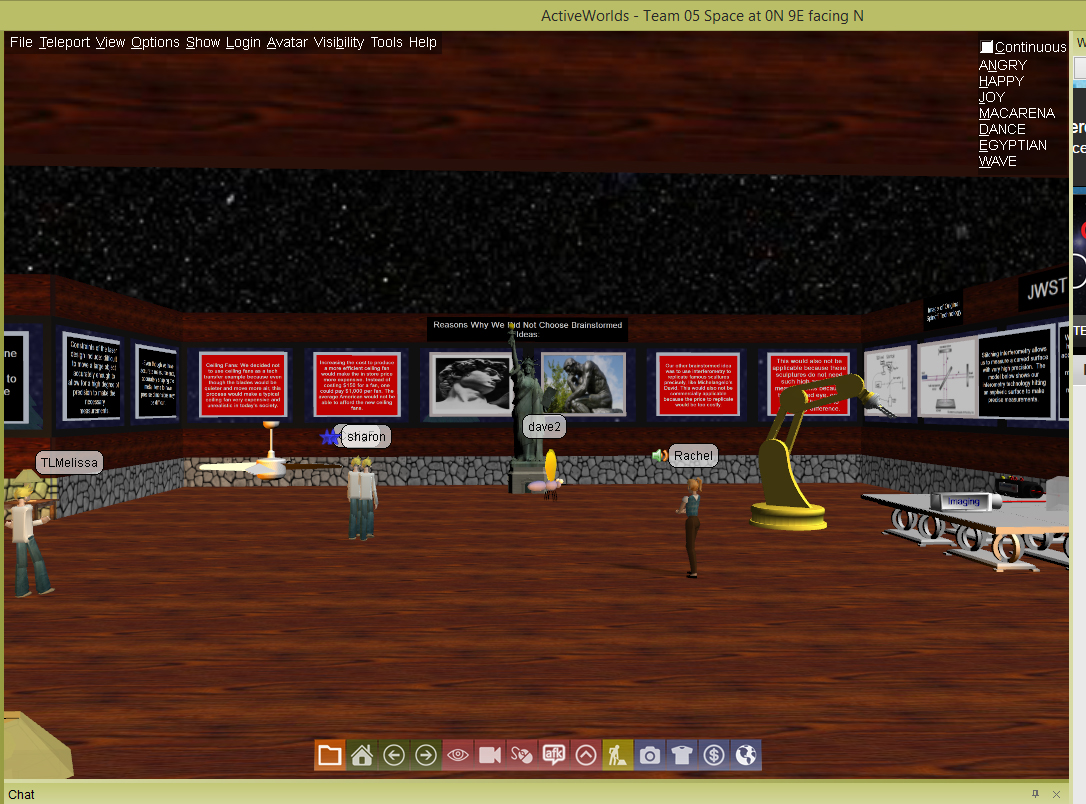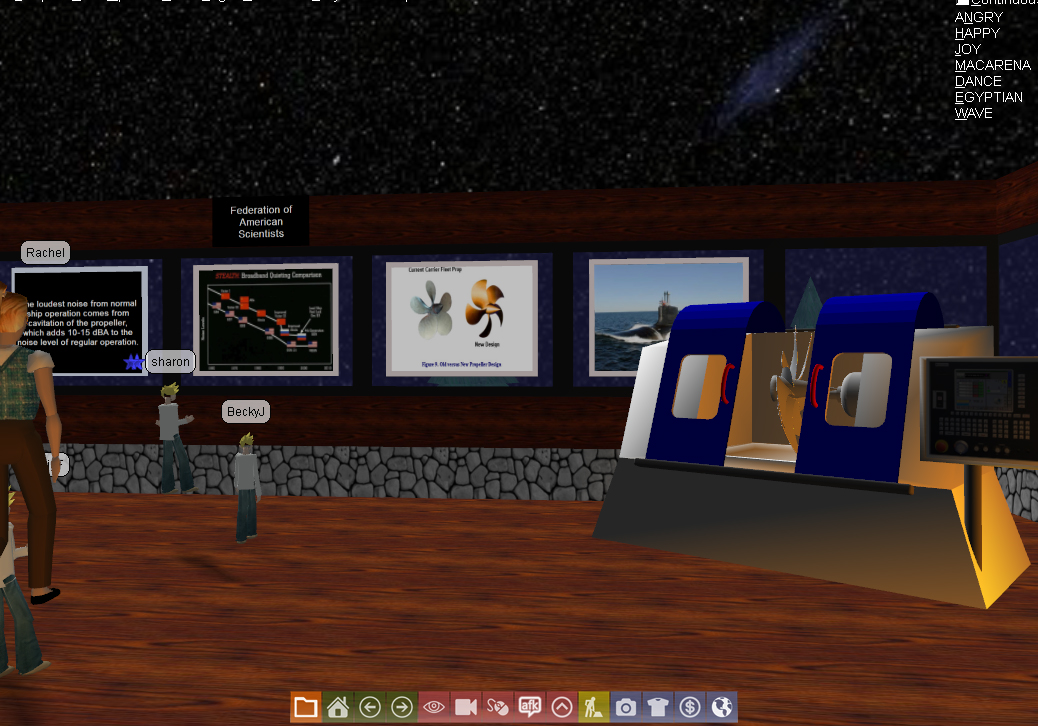Which of NASA’s space-venturing creations would you like to see used on Earth? Are there ways to reinvent spacecraft technologies that could improve the lives of humans?
Students across the country joined forces to answer these questions and ultimately design a virtual environment for showcasing ideas in the NASA Goddard OPTIMUS PRIME InWorld Spinoff Challenge. NASA’s Goddard Space Flight Center in Greenbelt, Maryland, and the National Institute of Aerospace in Hampton, Va., hosted the final round of the InWorld Challenge April 30.

This year, the challenge had two components. The OPTIMUS PRIME Video Challenge asked elementary through high school students to produce a video highlighting their technology spinoff creations. The InWorld Challenge required sixth through 12th graders to use ideas generated by the Video Challenge to build a 3-D computer version of their designs.
“The challenge gets kids excited,” OPTIMUS PRIME InWorld Program Manager Sharon Bowers said. “It lets kids understand that there is a process in engineering. It also asks students to think how they can explain ideas and thoughts to others by creating 3-D models.”
This was the first year the OPTIMUS PRIME Video Challenge and the InWorld Challenge came together. NASA’s Innovative Technology Partnership Office brought in the Video Challenge, while the National Institute of Aerospace backed the InWorld Challenge. The James Webb Space Telescope mission was instrumental in designing the InWorld component.
Judges announced winners of the OPTIMUS PRIME Video Challenge in April.
During the InWorld Challenge phase of the competition, college engineering students mentored the teams of younger students and supplied technical information.
“It was a great experience,” said Zachary Cooper, Team 4 leader and Iowa State University aerospace engineering student.
Most groups consisted of students from different states, which added another element to the competition – challenging students to develop a well-structured design without ever meeting in person. For the majority of the students, this was their first experience working with computer models to create their own designs.
“We taught ourselves how to move around, build objects and create our own virtual world,” Zack Lin from Team 5 said. “We are so grateful to have had the opportunity to compete.”
Ultimately, Teams 2, 4 and 5 were selected for the final InWorld Challenge round, where students and mentors showed off their virtual creations to a panel of judges via Internet.
Final-round competitors prepared by formulating a business plan to sell their spinoff inventions to the judges. Each group guided evaluators through the virtual world they designed.
Competitors chose one of NASA’s space technologies used in Webb telescope, the planned successor to the Hubble Space Telescope, to recreate as their own spinoff. Teams focused on how the technology could be used in a new way, but on Earth rather than in space. The challenge outline provided examples of existing Webb telescope spinoff creations. Students chose one of these innovations as inspiration for their own spinoff.
Existing Webb spinoff examples include telescope innovations for recording observations more quickly and more precisely when measuring intricate surfaces. These technologies help doctors and researchers improve accuracy in eye surgery and other medical procedures.
Another example involves advances in testing large telescope mirrors and other space hardware in cryogenic vacuum chambers, which are used to decrease the temperature and remove air from a closed compartment in order to test how hardware will function in space. These recent technologies involve interferometers, which focus on gaining information about the waves of an object in order to make sharper measurements.
All three of the final teams spinoff designs would lead to faster, more accurate measurements in order to improve observations and, ultimately, enhance the lives of humans in various ways.

Team 5 aimed to improve the speed and efficiency of military aircraft and submarine propeller blades using interferometers. Team 2 had a primary goal to make more accurate measurements of land surfaces to improve topographical maps by repurposing Webb technologies. Team 4 hoped to apply space innovations to surgical procedures by improving the accuracy of bone fracture scans.
Groups showcased their designs’ applications to industry, daily life and to future technologies. Some factored in issues such as cost, manufacturing and environmental effects.
Judges included NASA scientists and engineers involved with Webb telescope, Spinoff Challenge coordinators and guests from the U.S. Patent Office.
Virtual worlds had to follow specific requirements in order remain in the game. First, teams were required to showcase their own version of the Webb Telescope along with a version of their chosen Webb spinoff.
The key focus, however, was on the team’s original spinoff design. Judges placed heavy weight on each team’s design and its applications, feasibility and marketability.
Teams received higher scores for effective communication, displaying advanced knowledge and understanding of the Webb technologies and for showing that considerable thought and effort went into both the design process and the business case. Each group reflected by highlighting challenges they overcame both in the designing process and in the team setting.
“I came out of this challenge knowing how to stay flexible and patient when unexpected challenges arise,” Kelly Derees from Team 2 said. “Science and technology push innovation through overcoming challenge and expanding our ability to explore and achieve as a race.”
The winning InWorld team, Team 2, was announced May 5. Two Virginia Tech engineering students, Megan Frey and Ken Houck, led the group. Student members included Derees and David Sugg. Awarded students from both the OPTIMUS PRIME Challenge and the InWorld Challenge earn the opportunity to visit Goddard for a behind-the-scenes tour, a workshop led by NASA scientists and engineers, and an awards ceremony. Winners also have the chance to work with Peter Cullen, who most recently voiced OPTIMUS PRIME in ‘Transformers: Age of Extinction’ and the anticipated ‘Transformers 5.’
For more information on the OPTIMUS PRIME InWorld Spinoff Challenge: http://jwst.nasa.gov/realworld.html
Tashiana Osborne
NASA’s Goddard Space Flight Center, Greenbelt, Maryland

























